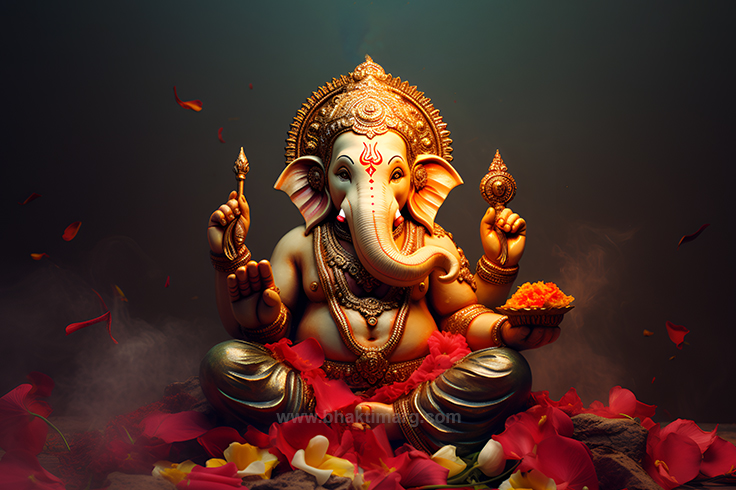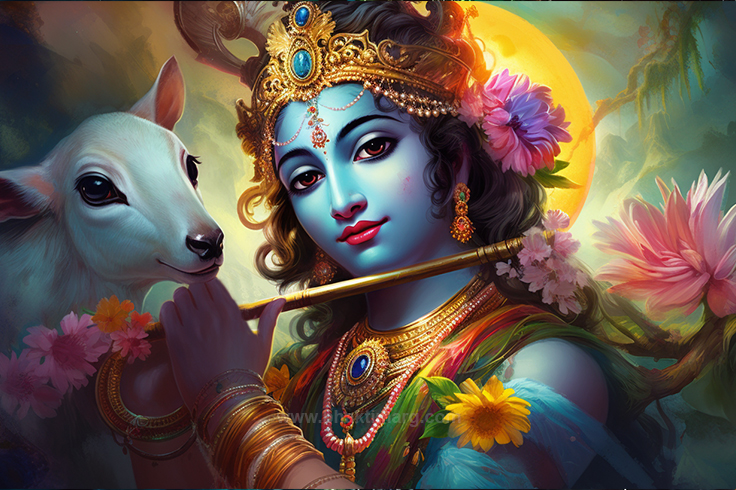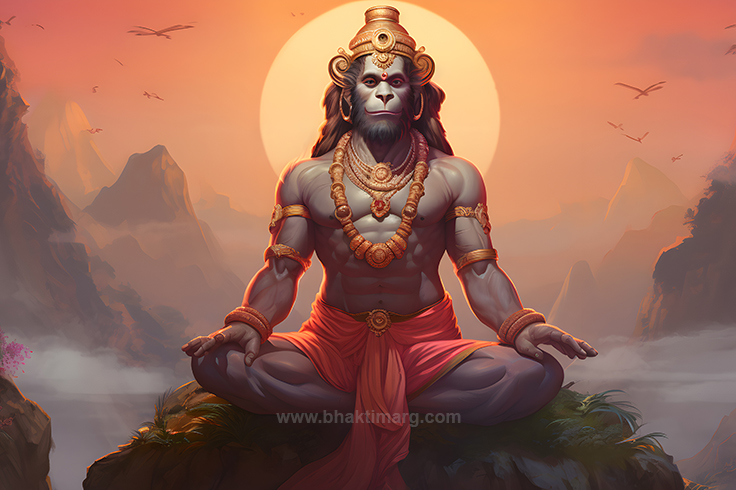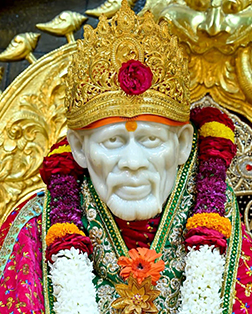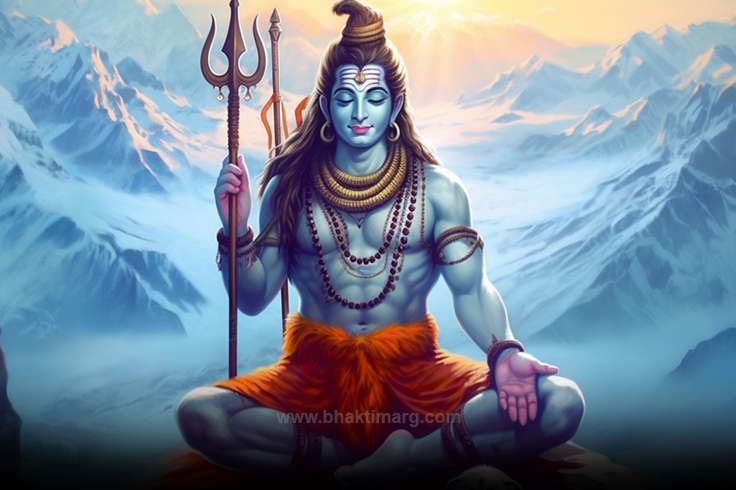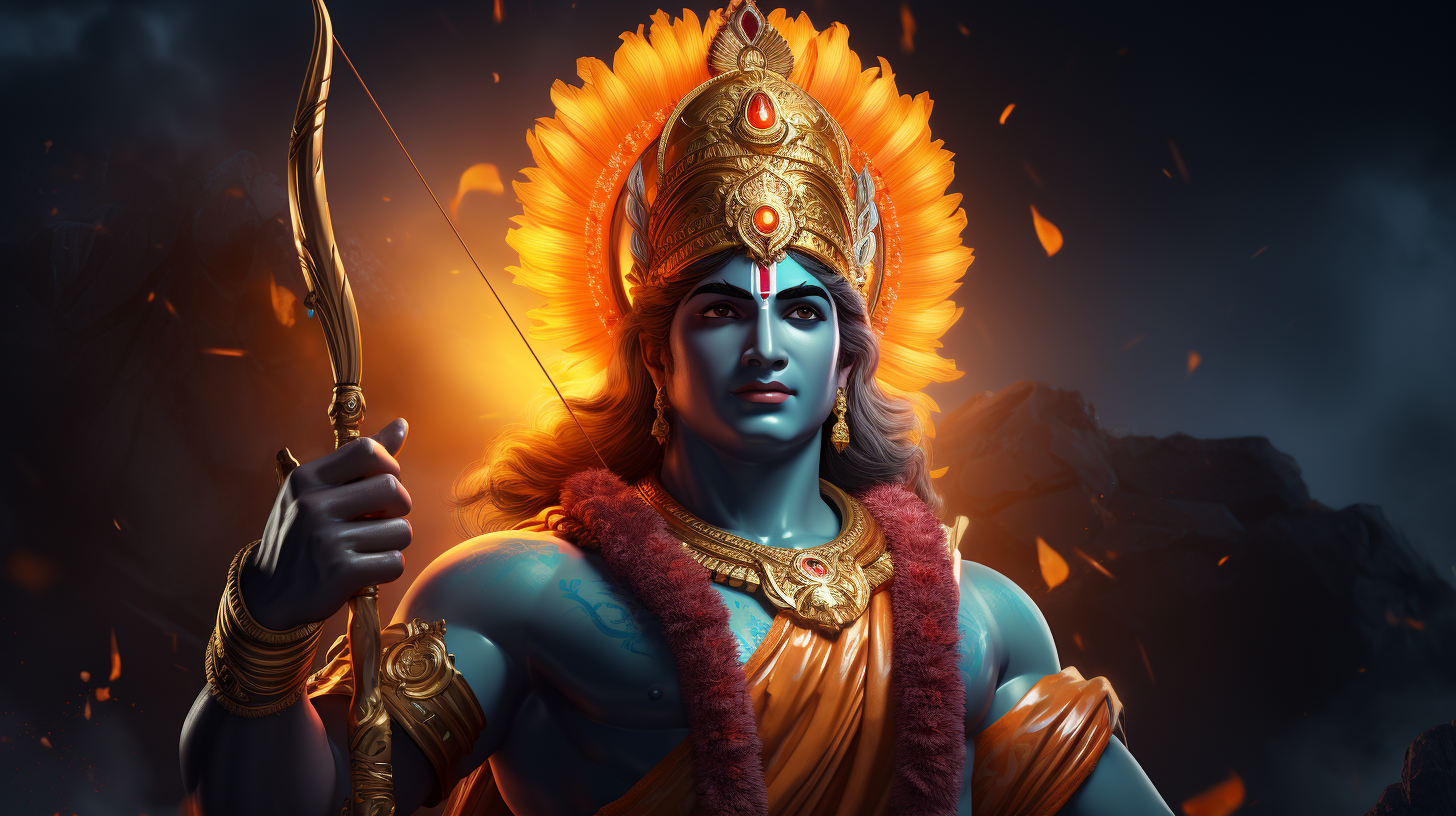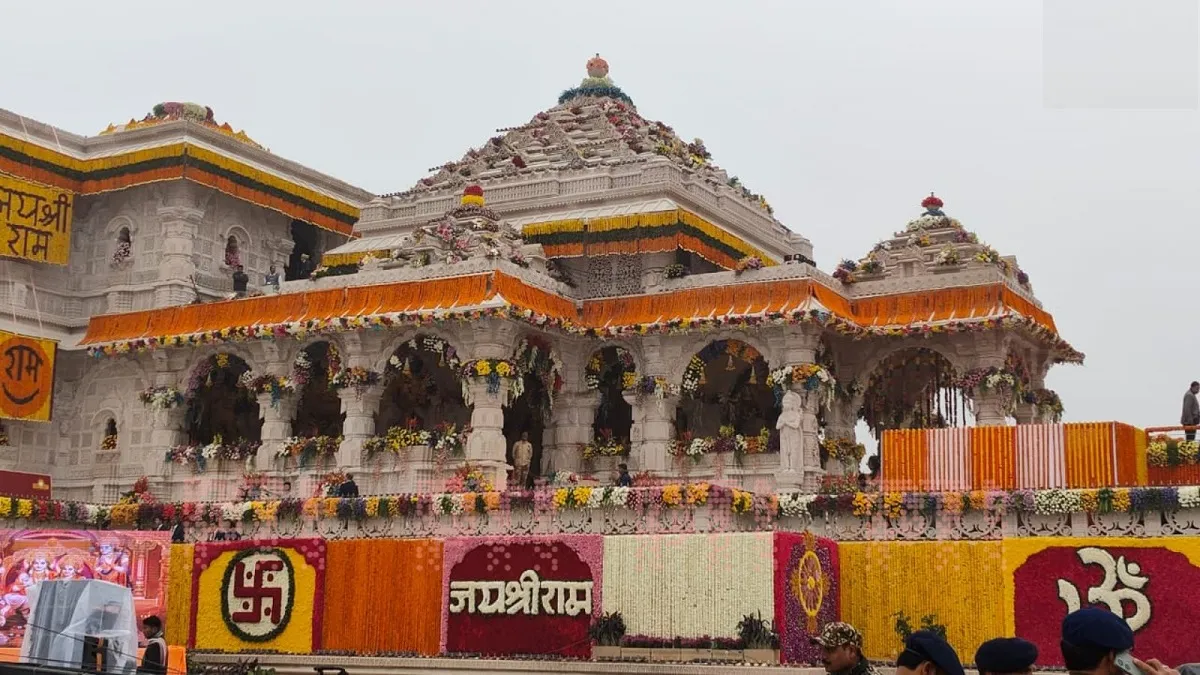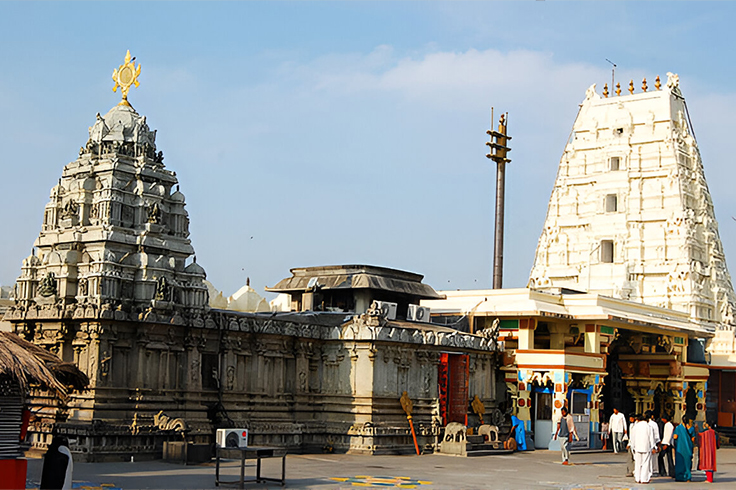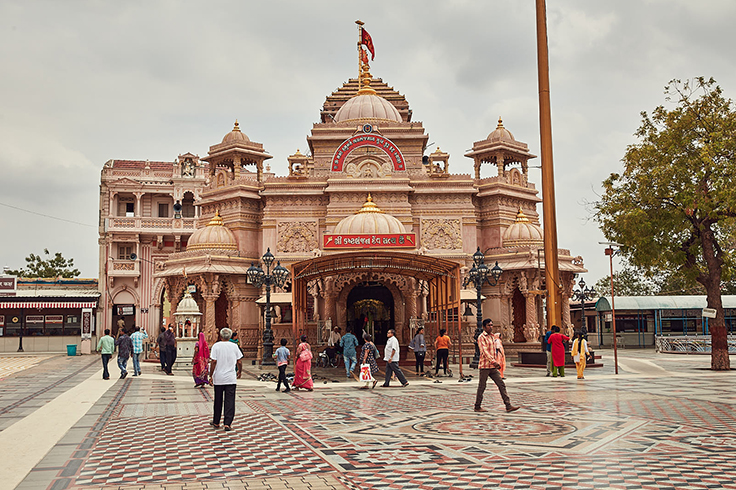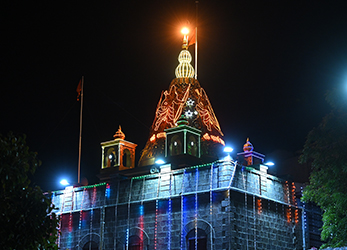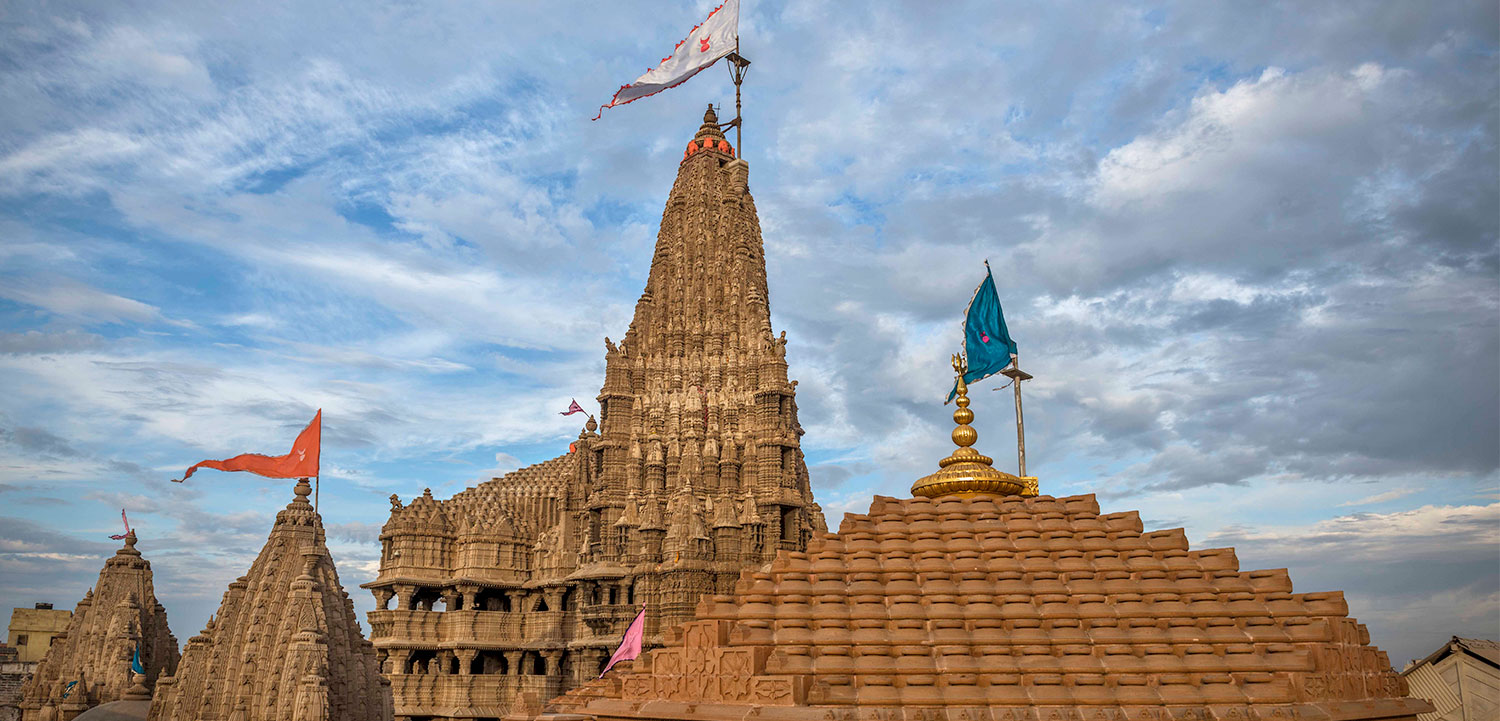Ambe Tu Hai Jagdambe Lyrics – Maa Durga Ji Ki Aarti
Ambe Tu Hai Jagdambe Kali,
Jai Durge Khappar Wali ।
Tere Hi Gun Gaaye Bharati,
O Maiya, Hum Sab Utarey Teri Aarti ॥
Tere Jagat Ke Bhakt Janan Par,
Bhid Padi Hai Bhari Maa ।
Daanav Dal Par Toot Pado,
Maa Karke Singh Sawari ।
So-So Singho Se Tu Balshali,
Asth Bhujao Wali,
Dushton Ko Pal Mein Sangharti ।
O Maiya, Hum Sab Utarey Teri Aarti ॥
Maa Bete Ka Hai Ish Jag Mein,
Bada Hi Nirmal Nata ।
Poot Kaput Sune Hai Par Na,
Mata Suni Kumata ॥
Sab Par Karuna Darshaney Wali,
Amrut Barsaney Wali
Dukhiyon Ke Dukhdae Nivarti ।
O Maiya, Hum Sab Utarey Teri Aarti ॥
Nahi Maangtey Dhan Aur Daulat,
Na Chaandi Na Sona Maa ।
Hum To Maangey Maa Tere Man Mein,
Ek Chota Sa Kona ॥
Sabki Bigdi Banane Wali,
Laaj Bachane Wali,
Satiyo Ke Sat Ko Sanvarti ।
O Maiya, Hum Sab Utarey Teri Aarti ॥
Maa Ambe Aarti
The concept of Goddesses in Hinduism is highly divine and complex existance, they are the feminine counterpart of the Gods and are revered as their equal half. There are a multitude of feminine deities each having their own unique characteristic and attributes. Adi Parashakti is said to be the supreme divine feminine who has segregated herself into different parts, taken different avatars and forms to regulate the universe and destroy the evil from time to time.
Mahadevi has taken several forms for the progression and regulation of the universe namely, Kali the fierce protector, Saraswati the goddess of knowledge art, and wisdom, and Laxmi the goddess of wealth, fortune, and prosperity being the Tridevi and divine counterpart of Tridev assisting them so that the universe is functioning well. Other forms like Parvati, Durga, and Sati are the embodiment of goddess Shakti herself on earth for their devotees’ well-being.
History and Origin of Navdurga
Mahadevi Shakti is said to be the energy source of the universe and all the Gods and deities praise her. She took the Navdurga avatar the nine form of the goddess Durga particularly revered during the festival and popularly known as the 9 goddess of Navratri. Each form of Devi Maa has a story dedicated to them as mentioned in Devi Puran among which Maa Durga or Ambika and Maa Kali is the principle aspect of goddess Mahadevi. The Navadurga are
- Shailaputri
- Bramncharini
- Chandraghanta
- Kushmanda
- Skandamata
- Katyayani
- Kalaratri
- Mahagauri
- Siddhatri
These goddess represents various aspect of the divine feminine and is worshipped by devotees for a wide range of reasons, including strength, patience, benevolence, grace, motherhood, protection, innocence, wealth, prosperity, courage, and knowledge. Maa Durga Aarti is an example of the same having all the aspects portrayed in it.
Maa Durga and Her Significance in Hinduism
Goddess Durga also known as Ambika is the epithet of Mahadevi and is one of the most revered goddesses in Hinduism. According to Devi Mahatmya, she took the form to kill Mahishasur the demon bull who was creating chaos all over the Trilok. So all the Deities came to Devi Maa for protection and she took Durga Swaroop to end the evil’s tyranny.
- She is considered the divine mother as she embodies the qualities of love compassion and protection. Durga is the primary representation of Shakti and symbolizes an active, creative, and nurturing aspect of the feminine divine.
- Durga Devi is renowned for her role in slaying Mahishasur symbolizing the trump of good over evil and righteousness over wickedness. She is depicted with multiple arms, each holding various weapons, riding a lion or tiger showing her strength, and readiness to protect and defend her devotees.
- Her different forms include Navaratri Goddess Mahakali, Parvati, Ambika, Kalaratri, Katyayani, and many more guiding her deities in times of adversity. In Hinduism, she represents supreme reality transcending time and space as she is the source of creation and destruction of evil making her the symbol of the life and death cycle.
The Tradition and Meaning of Maa Ambe Aarti
Maa ambe ki aarti is a devotional hymn or song of praise dedicated to Maa Ambe an alternate name for Durga in Hinduism. The origin of Durga Mata Aarti would be challenging even so Devi Puran mentions she is being praised by songs and hymns even by the deities with devotion. Archeologically speaking there are sculptures of Devi Maa found that can be traced back to Indus Valley Civilization. There is mention of the goddess in the 10th Manadala of Rigved which is said to be the first occurrence, and another dedicated Hymn Mata Ki Aarti to the divine feminine called Devi Suktam.
Since Devi Maa is the most revered, fierce yet gracious being in existence, her worship has a traditional and cultural pattern followed by her devotees.
- The Durga Aarti is typically performed during morning and evening worship sessions at the temple or homes. The Ambe maa aarti consists of stanzas in praise of the goddess, it highlights her attributes, victories over evil, and devotees’ unwavering faith in her
- On special occasions and during pooja there are certain rituals followed to conduct the Durga ji ki Aarti. It involves offering prayers, flowers, incense, and a lit lamp or camper to the deity on many occasions there is a practice of Akhanda jyot eternal flame.
- The maa ambe ji ki aarti is a way for devotees to express their devotion, love, and reverence to the goddess, invoking her presence and grace during the ritual. Maa durga aarti is performed in some homes but is generally conducted on a large scale in temples and spiritual communities
- The Maa Durga ambe aarti defines her divine form and her graceful acts to protect her devotees the hymn is dedicated to the divine feminine and may vary depending on the regional tradition and the version of Durga aarti performed, even in different languages according to the region and its dialect
Benefits of Singing Jai Maa Durga Ji Ki Aarti:
The praising hymn of Maa Shakti Durga is intentionally to praise her existence and offer gratitude for the protection she provides her devotees. Aartis, Mantra Stotra, and songs have been an integral part of Hindu Tradition though they have erupted from the feeling of devotion and admiration they provide benefits for the one reciting.
- The ambe maa aarti has a deep spiritual and cultural significance and serves as a way to connect with the divine, seek her blessing, and express one’s devotion and gratitude, acquiring the immense blessing and protection of the divine feminine
- The reciting of Durga Aarti requires concentration and focus encouraging a state of mindfulness, and calm mind, invoking inner strength and guidance by Devi maa to her devotees
- It is said that words and music have a positive vibration which helps create positivity, remove obstacles, and develop inner peace, all adding up to strengthening faith and enhancing the spiritual journey so singing the Devi Maa Durga Ji Ki Aarti elevates one’s mind, body, and soul
- Regular reciting of Maa Durga Ambe Aarti also promotes cultural preservation as it is passed from one generation to another with all the rituals and their meaning. Along with it during festivities, it fosters a sense of togetherness and shared spirituality in the community
Festival and Practises of Devi Maa Pooja
Maa Shakti Durga Aarti is performed for morning prayers and on occasions like Durga Pooja and Navaratri festival. Along with the Ambe Mata aarti, there are certain rituals and traditional practices that are followed. There is a whole entourage that is decorated like pooja thal is designed with incense sticks, Haldi Kumkum, Khana Oti (blouse piece and coconut) offering for Devi Maa, and some even observe fast for the ritual.
- During the Navaratri Devi festival, elaborate rituals, prayers, and fasting are observed and people often participate in a colorful dance and cultural celebration, celebrating the goddess’s triumph over evil
- During Navaratri, Mata Durga is praised prominently on the eighth called Asthami, in the Kolkata region the famous Durga Puja also called Durgashtami is conducted, in the eastern and southern regions of India this day is celebrated by conducting Kanya Poojan
- During Navaratri, there are huge idols of Maa Durga sitting on lions or tigers two or four hands holding various weapons all representing her attributes are established. Each morning and evening a grand public Nav Durga Mata Aarti is sung and Prashad is distributed among the devotees
Maa Durga is the eternal divine feminine existence of the universe that is revered and is an integral part of the cultural heritage of many communities. She is the embodiment of strength, compassion, and protection. Navdurga Aarti and pooja hold deep significance in Hinduism and continue to play a vital role in the spiritual and cultural life establishing the strong fierce and gracious image of the feminine.



